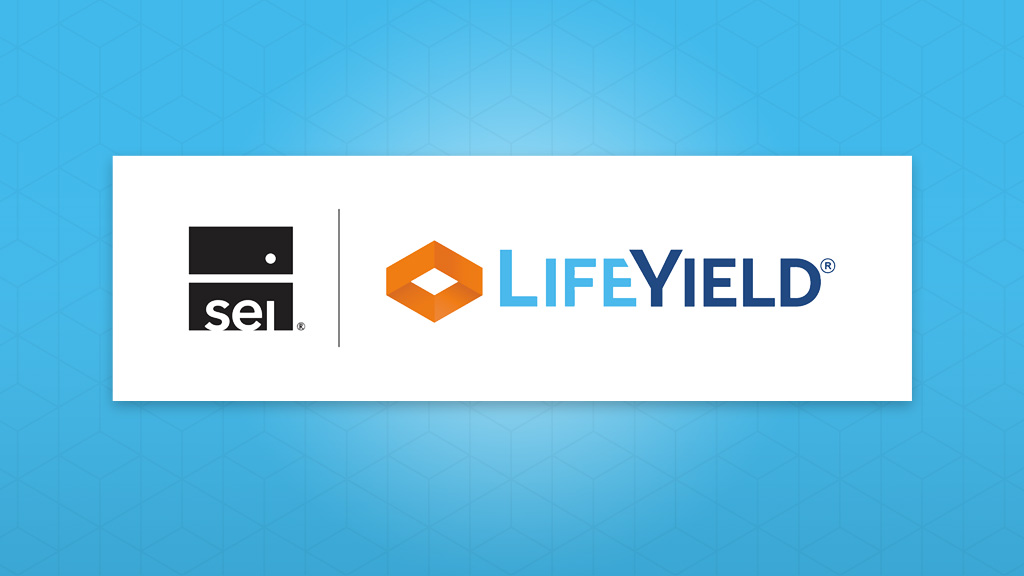Tax Harvesting Strategies for 2023

Tax harvesting strategies play a crucial role in optimizing tax efficiency. As we approach the end of 2023, it becomes imperative to understand the various tax harvesting techniques that advisors, firms, and clients can employ to minimize tax liabilities and maximize after-tax returns.
Tax-loss harvesting offers opportunities to offset capital gains with capital losses, but there are certain limitations and control measures that need to be considered. To address these complexities, LifeYield created a solution to implement successful tax harvesting strategies for advisors and firms across an advisor’s entire book of business.
Tax Harvesting Strategies in 2023
Tax-loss harvesting vs. tax-gain harvesting. What’s the difference?
Tax-loss harvesting involves selling investments that have experienced losses to offset taxable gains on other investments. This strategy can be advantageous as it allows advisors to reduce their client’s overall tax liability by deducting capital losses against capital gains.
Tax-gain harvesting, however, involves intentionally realizing gains by selling appreciated investments. This strategy can be beneficial when an investor expects their future capital gains tax rate to be higher than the current rate.
The decision between tax-loss and tax-gain harvesting should ultimately depend on each individual client’s circumstances, including projected income levels and anticipated changes in taxation policies.
Benefits of tax harvesting
Tax harvesting strategies offer benefits by using capital losses to offset taxable gains and thereby reduce overall tax liability. By selling investments that have experienced a decline in value, investors can generate capital losses that can be used to offset capital gains realized elsewhere in their portfolios. This process allows investors to minimize their tax obligations by strategically timing the recognition of gains and losses.
Additionally, tax harvesting provides an opportunity to reset the cost basis of investments, potentially reducing future taxes on any subsequent appreciation. It is important to note that to comply with U.S Internal Revenue Service (IRS) regulations, advisors must ensure that they are not repurchasing substantially identical securities within a certain time frame after selling them at a loss. If they do, they may trigger a wash sale and negate the tax loss harvesting advantages.
LifeYield’s tax harvesting technology
LifeYield’s innovative technology provides advisors with a powerful tool to optimize clients’ portfolios and strategically manage gains and losses for maximum tax efficiency. This tax harvesting technology offers several key features that can greatly benefit investors in implementing an effective harvesting strategy for 2023:
- Automated tracking of gains and losses: LifeYield’s technology continuously monitors the performance of investments, accurately identifying opportunities for tax harvesting.
- Real-time tax optimization: The platform dynamically calculates the optimal time to harvest losses or gains, taking into account individual tax brackets and preferences.
- Portfolio rebalancing: LifeYield’s technology automatically adjusts portfolios to maintain desired asset allocations while considering potential tax implications.
- Tax-efficient withdrawal strategies: The platform assists in determining which assets should be liquidated first during retirement withdrawals, minimizing taxes paid.
- Tax-loss carry-forward optimization: LifeYield’s system maximizes the utilization of unused capital losses from previous years, reducing future taxable income.
By leveraging Lifeyield’s tax harvesting technology, investors can effectively navigate the complexities of taxation and enhance their portfolio’s overall tax efficiency.
Tax Harvesting Types
Different types of tax harvesting strategies should be considered for optimizing tax savings in 2023. When it comes to tax harvesting, there are several approaches that individuals can take to minimize their income tax liability and maximize their overall financial gains.
These strategies include:
- Loss harvesting: This involves selling investments that have experienced a loss in order to offset capital gains and reduce taxable income. By strategically realizing losses, investors can use them to offset any capital gains they may have incurred throughout the year.
- Sector rotation: This strategy involves shifting investments from one sector or industry to another in order to take advantage of changing market conditions. By strategically rebalancing a portfolio based on market trends, investors can potentially generate additional gains and minimize their tax liabilities.
- Tax-efficient fund selection: Investors can choose funds that are specifically designed to minimize taxable distributions, such as index funds or exchange-traded funds (ETFs). These types of funds typically have low turnover rates, reducing the likelihood of generating significant capital gains distributions.
- Avoiding wash sales: A wash sale occurs when an investor sells a security at a loss and then buys it back within 30 days before or after the sale. To avoid this, advisors can wait for more than 30 days before repurchasing the same security or invest in a similar but not identical security immediately after selling at a loss.
By employing these various tax harvesting strategies, advisors can effectively manage their client’s investment portfolios while minimizing their tax liabilities. It is important for advisors to carefully consider which strategies align with their client’s specific financial goals and circumstances in order to optimize their overall tax savings in 2023.
Benefits of Tax-Loss Harvesting
There are significant advantages to implementing tax-loss harvesting techniques. Using tax-loss harvesting, advisors can reduce a client’s overall tax drag and potentially increase their after-tax returns.
- One of the key benefits of tax-loss harvesting is its ability to minimize taxes paid on capital gains. When an investor sells an investment that has appreciated in value, they are typically subject to capital gains taxes. However, by strategically selling investments that have declined in value, investors can generate losses that offset these taxable gains. This allows them to reduce or even eliminate their capital gains tax liability.
- Another advantage of tax-loss harvesting is the ability to use losses to offset other types of income. In addition to reducing capital gains taxes, harvested losses can be used to offset ordinary income up to a certain limit. This can be particularly beneficial for high-income earners who may face higher marginal tax rates.
- Furthermore, implementing tax-loss harvesting strategies can help improve overall portfolio efficiency. By regularly reviewing and rebalancing one’s portfolio through the selective sale of underperforming assets, investors can ensure that their portfolios remain aligned with their long-term investment goals while also taking advantage of potential tax savings.
As 2023 approaches an end and advisors seek ways to optimize their client’s financial outcomes, understanding and implementing effective tax-harvesting strategies will continue to be crucial for maximizing after-tax returns.
Benefits of Tax-Gain Harvesting
Tax-gain harvesting is an approach that involves intentionally selling investments with capital gains in order to realize those gains and subsequently increase one’s taxable income. While this may seem counterintuitive, there are several distinct benefits associated with this strategy.
- Tax-gain harvesting allows individuals to take advantage of the preferential tax treatment given to long-term capital gains. By intentionally triggering these gains, taxpayers can potentially enjoy lower tax rates compared to their ordinary income. This can result in significant savings over time, especially for high-income earners who face higher marginal tax rates on their regular income.
- Additionally, tax-gain harvesting provides a way to strategically manage capital gains over time. By proactively realizing gains when it is most advantageous from a tax perspective, individuals can effectively smooth out their overall taxable income across multiple years. This can help minimize the impact of large spikes in income due to unforeseen events or windfall profits.
- Furthermore, tax-gain harvesting offers an opportunity for portfolio rebalancing while still maintaining a favorable tax position. By selectively selling appreciated overweight assets and reinvesting the proceeds into other underweight investments that align with one’s portfolio target, financial goals, and risk tolerance, investors can achieve both diversification and potential growth while being mindful of their taxable gains.
Control and Limitations in Tax-Loss Harvesting
Control and limitations in tax-loss harvesting is a regulatory framework that imposes boundaries on the strategic approach of offsetting capital gains with capital losses to minimize taxable income. Understanding these controls and limitations is crucial for taxpayers and their advisors seeking to maximize the benefits of tax-loss harvesting strategies and minimize tax drag on their portfolios.
The first control is the wash-sale rule, which prevents investors from immediately repurchasing a security that was sold at a loss within 30 days before or after the sale. This rule aims to prevent taxpayers from artificially creating losses by selling and repurchasing the same security. Violating this rule would render the loss ineligible for offsetting capital gains.
Another limitation is the annual limit on capital losses that can be used to offset capital gains. As per current regulations, individuals can only deduct up to $3,000 of net capital losses against ordinary income each year. Any remaining losses can be carried forward to future years indefinitely, but they cannot fully offset all capital gains in a single year.
Lastly, tax-loss harvesting strategies may also face limitations imposed by specific investment vehicles. For example, mutual funds are required to distribute realized capital gains annually to their shareholders, limiting opportunities for tax-loss harvesting within these funds.
LifeYield’s Solution
LifeYield’s tax harvesting solution maximizes tax efficiency for clients by leveraging advanced algorithms to identify and execute optimal tax-loss harvesting strategies.
The integration of LifeYield’s tax harvesting engine with its asset location and withdrawal engines allows for a holistic approach to tax optimization, ensuring that all aspects of a client’s financial plan are considered.
This scalable technology benefits both small advisory firms and large financial institutions by automating the process and providing personalized tax optimization strategies tailored to each individual client’s needs.
Maximizing tax efficiency
LifeYield’s tax harvesting solution employs sophisticated algorithms and strategic portfolio rebalancing techniques to optimize tax outcomes for clients.
By leveraging advanced tax optimization strategies, LifeYield identifies opportunities to minimize tax liabilities through the systematic realization of investment losses. This is achieved by selling securities with unrealized losses and replacing them with comparable alternatives, thereby generating capital losses that can offset taxable gains.
The solution also considers individual client’s circumstances such as income level, risk tolerance, and time horizon to tailor the harvesting strategy accordingly. Additionally, LifeYield’s approach incorporates smart asset location techniques that strategically allocate assets across different account types to maximize tax efficiency further.
Through these comprehensive measures, clients can benefit from reduced tax burdens while maintaining a diversified portfolio aligned with their financial goals.
Integration with asset location and withdrawal engines
By seamlessly integrating with other tools such as asset location and withdrawal engines, LifeYield’s tax harvesting engine harmonizes the various components of a client’s financial plan to create a cohesive and optimized strategy.
The integration of LifeYield’s tax harvesting engine with asset location and withdrawal engines enables a comprehensive approach to tax efficiency. By considering not only tax harvesting strategies but also the placement of assets and the timing of withdrawals, this integrated solution maximizes after-tax returns for clients.
The asset location engine determines the most suitable account type for each investment, taking into account factors such as tax rates and investment objectives. Meanwhile, the withdrawal engine optimizes the sequence and amount of withdrawals from different accounts to minimize taxes throughout retirement.
This seamless integration allows clients to benefit from a holistic approach that considers all relevant factors for optimizing their tax outcomes.
Scalability and suitability
The scalability and suitability of LifeYield’s tax harvesting technology make it a valuable tool for financial institutions, offering a comprehensive solution that can be seamlessly integrated into their existing systems.
Large financial institutions benefit from scalability by being able to handle a larger volume of client portfolios and effectively optimize tax outcomes on a massive scale. Additionally, the suitability of LifeYield’s tax harvesting technology ensures that it can meet the complex requirements and regulations specific to these types of organizations.
By using this advanced technology, financial institutions can enhance their offerings and provide substantial value to their clients in terms of reducing taxes and maximizing investment returns.
Frequently Asked Questions
Is tax harvesting only beneficial for high-income individuals?
Tax harvesting is not exclusively beneficial for high-income individuals. While higher-income taxpayers may have more investment gains to offset, tax harvesting can still be advantageous for individuals in lower income brackets.
It allows taxpayers to minimize their taxable income by offsetting capital gains with capital losses, regardless of their income level. This strategy helps reduce the overall tax liability and can be utilized by anyone seeking to optimize their tax situation, no matter what their income bracket.
Can tax harvesting strategies be used for any type of investment?
Tax harvesting strategies can be employed for various types of investments, regardless of the investor’s income level. This approach involves selling investments that have experienced losses to offset capital gains and reduce taxable income. By doing so, investors can minimize their tax obligations.
Are there any limitations or restrictions on the amount of losses that can be harvested?
There are limitations and restrictions on the amount of losses that can be harvested through tax harvesting strategies. The IRS imposes a limit on the amount of capital losses that can be deducted in a given year.
Currently, individuals can offset up to $3,000 of their ordinary income with capital losses. Any remaining losses can be carried forward to future years.
Additionally, there may be restrictions based on specific investment types or holding periods.
How does tax-gain harvesting differ from tax-loss harvesting?
Tax-gain harvesting is a strategy that involves selling appreciated assets to generate taxable gains. It differs from tax-loss harvesting, which focuses on selling depreciated assets to offset taxable gains.
While tax-loss harvesting aims to minimize taxes by offsetting losses against gains, tax-gain harvesting seeks to take advantage of low or zero capital gain tax rates.
This strategy can be used strategically in conjunction with other tax planning strategies to optimize overall tax liabilities.
Can tax harvesting strategies be used for retirement accounts, such as 401(k)s or IRAs?
Tax harvesting strategies can be used for tax-advantaged retirement accounts, including 401(k)s or IRAs. However, the implementation of these strategies may differ compared to taxable accounts. In retirement accounts, tax consequences are deferred until funds are withdrawn, which limits the immediate benefits of tax harvesting.
Nevertheless, individuals with multiple retirement accounts or those in the early stages of retirement might still find value in implementing tax harvesting techniques to optimize their overall tax liability and investment returns in the long run.
Conclusion
Tax harvesting strategies in 2023 are a crucial aspect of financial planning. With the aim of minimizing tax liabilities, investors can use tax-loss harvesting and tax-gain harvesting with potential benefits of reducing taxable income, offsetting capital gains, and maximizing after-tax returns. Gifting and charitable donations can also be incorporated into the tax planning process.
It is important to note that there are limitations and regulations surrounding these strategies. By utilizing tools like LifeYield’s solution, advisors, and firms can optimize their clients’ portfolios to achieve maximum tax efficiency.
About LifeYield
LifeYield is a technology company that improves investor outcomes by minimizing investment taxes and maximizing retirement income.
Major financial services firms and innovative technology start-ups integrate LifeYield APIs into their platforms to perform ongoing processes that limit the effects of state and federal taxes on household portfolios and maximize retirement income, including Social Security.
Those APIs automate processes that are essential to maximizing returns across a household’s taxable and tax-qualified accounts: asset location, tax harvesting, transitions, point-in-time withdrawals, multi-account rebalancing, Social Security maximization, and retirement income sourcing.
LifeYield APIs go so far as to recommend to an advisor and client the next best actions: which tax lots and holdings should be redeemed in what sequence to maximize tax efficiency. Further, LifeYield technology quantifies a household’s or individual investor’s returns before applying processes to reduce tax drag and after – providing advisors with proof of the effectiveness of their recommended approach.
Investors, advisors, and their firms all benefit from LifeYield tax-smart technology: Clients retain more assets in their accounts because of paying less in taxes and optimizing their retirement income, including Social Security. Advisors and firms grow their assets under management organically by limiting redemptions to pay taxes and recommending products to bolster retirement income security.
The foundation of the LifeYield approach to wealth enhancement is:
- Taxes, more than any other factor, have an outsized effect on outcomes for investors and, ultimately, their financial security in retirement.
- Achieving “tax alpha” requires applying time-tested (but often ignored) practices across all accounts and holdings in a household portfolio.
- The habit of opening and managing individual accounts separately without consideration of the other accounts in a household portfolio leads to tax inefficiency and less-than-optimal outcomes.
- The future of financial advice sits at the confluence of digital tools and human advice. One alone is not enough. The two together make all the difference.
No other software-as-a-service (SaaS) solution is as all-encompassing or as successful as LifeYield in creating wealth through reduced tax exposure for investors and addressing the risk that longevity imposes on retirement security.
LifeYield technology is the choice of many of the most well-regarded names in the financial services and wealth tech industries, including Morgan Stanley, JP Morgan Chase, Franklin Templeton, Envestnet, Merrill, Allianz Life, Orion, Northwestern Mutual, New York Life, SEI, Summit Wealth, and others.
An independent analysis by EY found that LifeYield tax efficiency APIs:
- Produced up to 33% more income from assets
- Reduced taxes overall by as much as 45%
- Increased bequests by as much as 45%
… when applied to a household with $1 million in assets at age 50 with plans to retire at 65.
How LifeYield came to be
The idea for LifeYield is rooted in the work of our co-founder and chief investment officer, Paul R. Samuelson, with his father, Nobel Prize laureate Paul A. Samuelson.
Committed to the fundamental importance of minimizing taxes, they advised family and friends on how to enjoy investment success. They realized, however, that investors and advisors could not build and manage tax-smart portfolios without sophisticated technology.
Paul R. Samuelson teamed up with other longtime collaborators, Mark Hoffman and Michael Benedek, to found LifeYield in 2008. By developing tax-smart APIs, LifeYield helps advisors and firms realize their brass ring – consolidating multiple accounts with the unified managed household approach to client portfolio management – and investors optimize their lifetime investment income and achieve a secure retirement.
Monthly insights from our Chief Growth Officer, Jack Sharry
Get exclusive insights and interviews from around the industry

 By
By 




